
Lucas Held, Anne Bergeron and Beth Tuttle summarize The Wallace Foundation report, The Road to Results: Effective Practices for Building Arts Audiences, by Bob Harlow (2014, The Wallace Foundation), and Magnetic: The Art and Science of Engagement by Anne Bergeron and Beth Tuttle (2013, The AAM Press). Previously published in the July/August 2015 issue of Museum magazine.
Museums looking to build audiences face serious headwinds as arts and humanities education continues to decrease, competition for leisure time intensifies and new generations of visitors interact differently with institutions than generations past. Given these challenges, arts leaders are eager for information about what works— and what doesn’t—in audience engagement. In 2001, A New Framework for Building Participation in the Arts, a landmark report produced by the RAND Corporation and funded by The Wallace Foundation, suggested a systematic approach based on two precepts: the alignment of audience-building efforts with an arts organization’s mission, resources and work; and the removal of relevant barriers between the organization and target audiences.
To determine if and how these concepts could work in practice, The Wallace Foundation funded 54 arts organizations between 2006 and 2012 to develop and test approaches for expanding audiences. Among the 46 organizations with reliable data, the results were impressive: those seeking to boost their overall audiences saw gains over three years of more than 25 percent, and results for those targeting specific audiences were even higher. Based on case study evaluations of 10 of those successful organizations, market researcher Bob Harlow identified nine common practices, and the results were published in the 2014 report The Road to Results:
The Road to Results: Effective Practices for Building Arts Audiences and the related report Taking Out the Guesswork: Using Research to Build Arts Audiences, written by Bob Harlow and published by The Wallace Foundation, are available as free downloads at thrivingarts.org. Case study evaluations of the work of Fleisher Art Memorial and Clay Studio will be available later this summer. Magnetic: The Art and Science of Engagement, co-authored by Anne Bergeron and Beth Tuttle and published by The AAM Press, is available at aam-us.org/bookstore.
Effective Practices for Building Arts Audiences.
A separate multi-year and multi-institutional study conducted by Anne Bergeron and Beth Tuttle resulted in the publication of Magnetic: The Art and Science of Engagement (2013, The AAM Press). Their research and book defined “magnetic” organizations as those with a powerful internal alignment around engaging stakeholders and a compelling vision, enabling them to attract critical resources for organizational success. Through quantitative data analysis, interviews and qualitative case studies, Magnetic identified six practices leading to deeper engagement of internal and external constituents. As such, Magnetic serves as a natural complement to The Wallace Foundation’s practical guide to engaging audiences.
Skip over related stories to continue reading articleAt the 2015 AAM Annual Meeting in Atlanta, attendees gathered at a session entitled “Nine Effective Steps of Audience-Building Programs” to discuss the steps and practices driving success across diverse audience-building initiatives. Lucas Held, director of communications, The Wallace Foundation, kicked off the discussion led by the co-authors of Magnetic, Anne Bergeron, and Beth Tuttle. Joining the conversation were representatives from Wallace grantee organizations: Magda Martinez, director of programs, Samuel S. Fleisher Art Memorial; and Christopher Taylor, president, The Clay Studio. The following is adapted from the presentation.
The overall trend in public participation in the arts is downward. This decline, which analysts think is driven by increased competition and some diminution in arts education, has helped elevate audience building to the top of the list of concerns for arts and cultural organizations. Occurring simultaneously is a dramatic growth in the number of arts organizations—an astonishing 145 percent increase in the past 25 years or so.
In this context, The Wallace Foundation surveyed arts leaders across the country. The number one difficulty that arts leaders said they faced was fundraising and revenue. The next problem was building audiences: attracting them, developing effective audience strategies and handling increased competition.
Addressing the audience-building challenge has been hindered by a lack of hard evidence. There has been a lot of advice, but often not attached to data. That’s where The Wallace Foundation thought it could help. The foundation launched an initiative in 2006 to help arts organizations experiment with building audiences and, using data, figure out what worked. RAND’s A New Framework for Building Participation in the Arts was foundational. This report argues that many audience-building efforts are hit-or-miss because they have not identified either a specific target or the relevant barriers that need to be overcome for people to participate.
The results were surprisingly positive: over a four-year period, audiences grew substantially. Over a three-year period, for those organizations looking to grow their overall audiences, the rise was 27 percent. For those looking to increase a segment, like young people or families with children, audiences went up even more: 60 percent. The next step was figuring out what worked and finding common factors behind success to share with the broader field.
Case Study: Samuel S. Fleisher Art Memorial, Philadelphia
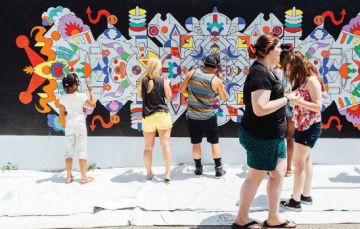
The mission of the Fleisher Art Memorial is to make art accessible to everyone, regardless of economic means, background or artistic experience. But Fleisher was serving a predominantly mainstream audience when we started our audience engagement research. Our mission and founder’s intention suggested much greater diversity demographically and economically. This lack of diversity became our call to action.
Out of the research, three main themes emerged. One was “Come to us.” People in these communities were saying, “We don’t know who you are. Come to where we are.” Then “show us” who you are—not just what you do, but who you are as an institution. What do you value? And finally, “Welcome us. Be ready for us when we come to your institution. You only get one chance at a first impression.”
Our first step was to create a definition for what “arts-based community engagement” meant for us as an institution. Engagement can mean many things to many people, even at the same institution. We realized that lots of arts institutions used the phrase but didn’t define it. We ended up creating one based on how social service agencies look at engagement.
Aligning the institution around your definition of engagement is important because often we’re trying to change other people’s behaviors. What you quickly find out is that it’s your behavior that needs to be examined. How are you presenting yourself to others? The only thing we have control over is us. You can’t force someone to come to you. All staff participated in self-examination exercises of their worldviews and in cultural sensitivity training, from the executive director to facilities personnel to receptionists to the board.
Out of this work we created several new programs. We recruited FAMbassadors, local advisors who create a channel of communication between their communities and Fleisher. ColorWheels, a mobile art studio, was our response to the call to “come to us.” We also started changing our offerings onsite, adding, for example, our first bilingual drawing course. Enrollment of local children in our onsite programs rose 50 percent, and a survey found that 72 percent of visitors felt that Fleisher cared about serving the local community.
Perceptions are the hardest but most important thing to change when you want to engage new people. It’s like inviting someone you don’t know to dinner without asking them what they like or if they follow a gluten-free diet. You might make the most beautiful bread, but it doesn’t really matter to them. This is about thinking through a human interaction. It is not solely a marketing effort. It is about an institution taking time to look at itself. The marketing message follows because you know what you want to say and to whom you want to say it. It is up to you to make the first move. If someone doesn’t know about you, are they suddenly going to pick up your pamphlet and think, “Where have you been all my life?” —Magda Martinez
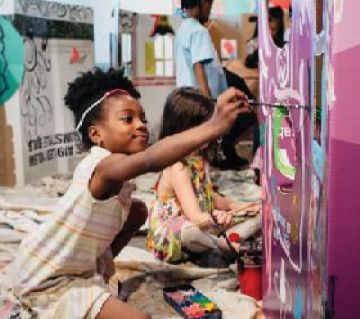
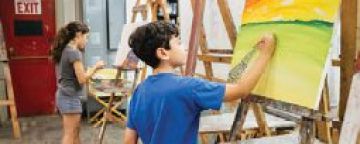
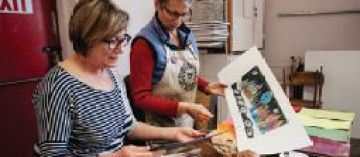
Evaluative case studies of 10 organizations (seven are now available) determined that there were nine effective practices that all successful organizations employed—though not necessarily in order. First, they recognized when change was needed. Second, they identified a specific target audience rather than going after the general public. The third was determining the barriers that needed to be removed. The fourth was taking the time to understand through market research what the prospective audience thought about the organization. That turned out to be a crucial step—not guessing what folks thought, but asking them. The fifth was thinking through the relationship. Sixth was providing multiple and different kinds of gateways into the organization. The seventh was aligning the organization around the audience-building goal. The eighth was building ongoing learning, and ninth was preparing for success. The nine divide into two categories: creating meaningful connections with your audiences and aligning the organization around those activities.
The Wallace Foundation and its grantees are certainly not alone in exploring what works when it comes to engaging audiences. Magnetic: The Art and Science of Engagement shares many common themes with The Road to Results, including an emphasis on the importance of prioritizing engagement and ensuring its adoption as a pan-institutional strategy. Magnetic examined the practices of museums that outperformed their peers in the first decade of the 21st century (between 2000 and 2010) in attracting and retaining financial, social and human resources. Each of the six museums profiled successfully transformed their operations by adopting concerted strategies to deepen engagement with their internal and their external communities (staff, trustees, patrons, volunteers, civic leaders, the general public and the like).
Case Study: The Clay Studio, Philadelphia
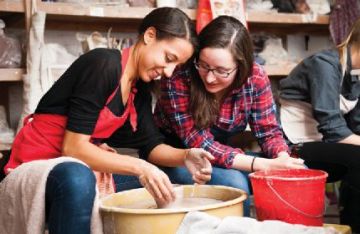
Our challenge was an aging audience. We realized not only was the younger audience not coming in, we didn’t know much about them or how to talk to them. So our focus was understanding the young professional audience (ages 25–45), their consumption trends, and how and where to effectively speak with them.
Through market research, we realized that 36 percent of our focus group had never before come to our space and 40 percent had come four times or more. So when we had you, we had you. At the same time, we were effectively attracting “samplers”—those who come in and don’t really make deep commitments to any one institution. We realized that this group was comprised of our target young professional audience. So very early on, the data was giving us interesting information.
Simultaneously we were looking at marketing language. We put material in front of the focus groups and said, “What do you think?” We learned that our previous tagline, “Shaping the future of ceramics,” was meaningful to us but didn’t mean anything to them. So we dropped this tagline and increased our use of action words. Our website began using the word “see” instead of “exhibit,” and we started using the phrase “Get dirty with us.” We also began changing our marketing photographs to people actively participating and making as opposed to highlighting the finished product on a pedestal or wall. In addition to becoming a more active and welcoming place, we had to talk and show that aspect, too.
From a programming standpoint, we heard what they didn’t want. They didn’t want high cost; they didn’t want high commitment; they didn’t want overly serious. So we experimented with programming that was social, low cost and low commitment. We offered shorter classes, weekend workshops and more sampling opportunities to engage people in our programs. Something simple—a few hours, or even a few minutes.
We saw a lot of great results thanks to our willingness to change, learn from our data, understand our audience and create multiple entry points. Since 2008 we’ve had a fourfold increase in our workshops, from 140 participants to over 700. We’ve more than doubled our overall school income from $140,000 to almost $380,000. —Christopher Taylor

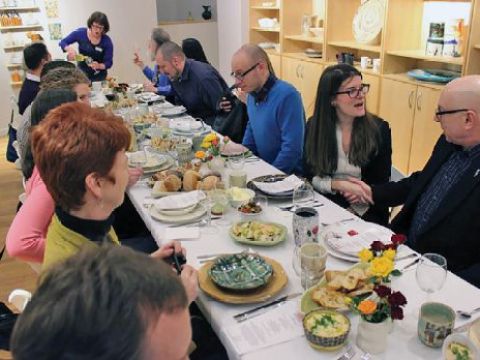
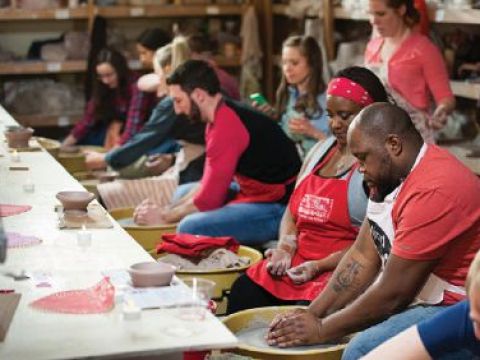
In the organizations studied for Magnetic, six common practices emerged that ultimately helped define the “magnetic museum”: a high-performance organization that delivers tangible cultural and civic value and achieves superior business results through a commitment to service, engagement, and empowerment of others. What the authors call “360 Engagement” is achieved through collaborative vision setting, broad-based relationship building, and creating meaningful experiences with and for a diverse range of stakeholders.
While there isn’t an exact correlation between the six practices of magnetic museums and the Wallace report’s nine practices in audience development strategies, there is a great deal of consistency and overlap related to the importance of organizational alignment, the commitment to engaging and empowering internal and external stakeholders, and proactively welcoming outside voices and becoming essential to the community. If Magnetic focuses largely on understanding the “why” of engagement, The Road to Results focuses on the “how to.”
A key observation of both studies is that transformation begins with awareness that change is either needed or wanted. Another correlative finding is that museums must be intentional and that they need to be fully committed to instituting change while being flexible and adaptable to what they learn during this process. Magnetic found that change can be initiated and cultivated anywhere within an institution, but if it’s not embraced at the highest levels, it can only go so far.
An institution’s commitment to audience engagement must be firmly grounded in its mission and belief in the social value of accessibility to achieve organizational impact. Efforts to increase audience engagement that are motivated solely to meet revenue needs rarely succeed. Marrying mission with market focus in a context of commitment to serving the real needs of people is the key.





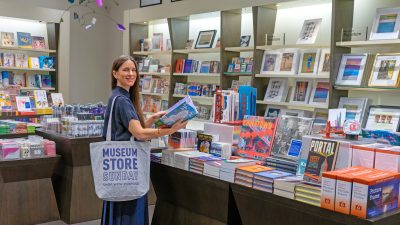

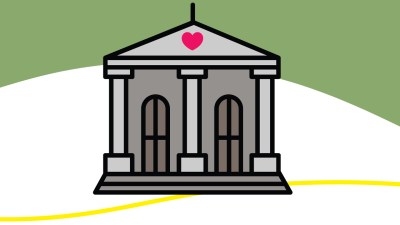
Comments